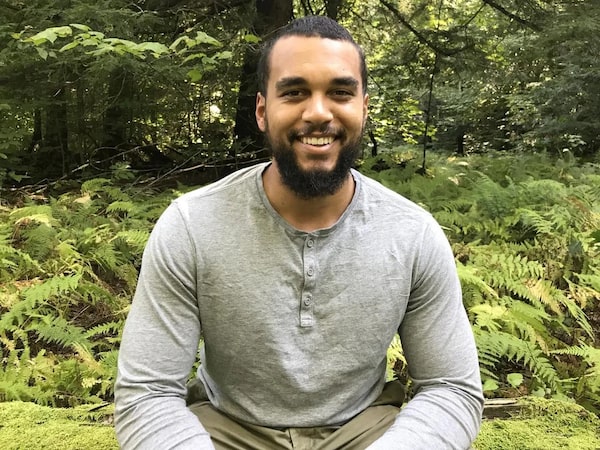
Author Kai Thomas.Brooke Bridges/Penguin Random House Canada
Kai Thomas brings a new twist to the oft-told story of the Underground Railroad in an assured debut that combines elements of myth, history and the prison drama to unique effect.
Set in 1859 in the composite all-Black town of Dunmore, Ont., In the Upper Country begins when Lensinda, a healer and writer for the local paper, is summoned to a nearby farm, where a slave catcher from the States has been shot dead by an elderly female fugitive named Cash.
Lensinda visits Cash in jail as she awaits trial; she’s convinced she can help her by coaxing her to tell her life story. But Cash proves, at least initially, a less than amenable interviewee. She’ll tell her tale only if Lensinda tells hers.
In the narratives that follow, see-sawing through time and across borders, the two women eventually find unexpected points of connection that collectively illuminate, among other things, the history of Black-Indigenous alliances in 19th-century North America. Born and raised in Ottawa, Thomas spoke to The Globe from his current home, on a farm in New York State.
You’re from Ottawa, so a ways from the places associated with the Underground Railroad. How did you end up writing about it?
The genesis of it was a very striking photograph of this man named John Daddy Hall. As I learned more about him, in particular through the work of the historian Peter Meyler, I was struck by how unique his story seemed. There are elements of it that spoke to the interconnected histories of Black and Indigenous peoples on both sides of the border, that spoke to the social lives of these towns that emerged during this period of the Underground Railroad. I’d been thinking about Black and Indigenous relations in the context of my own life and experience – the trajectory of my career moving from urban zones to doing land-based work was deeply influenced by my encounters and relationships with Indigenous folks.
As I dug into the history I found ample evidence of politically significant relationships between these peoples in this era, and it allowed me to reread a chapter of history that I had learned about in school – the Underground Railroad and the War of 1812 – and how these moments defined our national identity.
Which came first: the framing device of two women sharing stories or the stories themselves?
The core of what drew me to the book was trying to study the life of John Daddy Hall, whose life spanned over a century. Initially I conceived of writing the book as semi-biographical, about him, but the more I read really in the genre the less I felt comfortable doing that because I had just learned to embrace my role as a fiction writer and to get excited about the things fiction can do.
Peter Meyler showed me one of the census records he’d dug up from John Daddy Hall’s life, and on one, from Owen Sound, where he [John Daddy Hall] had settled, the name of one of his children popped up. It was Lensinda, and I thought, “That’s a cool name, I’ve never seen that before.” I started to imagine what this person’s life could have looked like, and from there I broadened out because I didn’t want to abandon the themes and chapters of history that initially drew me to the project. One of the ways that I set about trying to touch on all those themes was to make it polyphonic, to really bring in a chorus of voices.
Speaking of names, there are quite a few from Greek mythology in the book – Chiron, Circe, Sibyl, Hestia. What role do you conceive myth as playing in this story, which is also so grounded in the real?
Part of that comes from my upbringing. I read a lot of Greek myths as a kid. My dad, who taught me to read and write, introduced me to Greek myths, to the classics, to Shakespeare, so that’s part of the influence. Another part of it was researching the naming traditions amongst enslaved people in the 19th century and earlier. There were a lot of references to the canons in European literature, so it was also a call or a reference to that phenomena in history.
You went down a bunch of rabbit holes during the research for this book. What was the most interesting one to you personally?
One was learning about what maroon communities looked like in this region of the world; what a community spawned by previously enslaved or self-emancipated people looks like. Part of the story I’m trying to shed light on is: How do we think about that in a place like Canada, where the numbers of enslaved people were nowhere near as high as they were further south, certainly in the Caribbean and Brazil and elsewhere? The evidence that we’re going to find for what those people’s lives look like is not going to be anywhere near as substantial because of the sheer numbers, but through careful scholarship and reading between the lines and reading the records of things like runaway slave ads that were posted in the Quebec or Montreal Gazettes or different newspapers of the region, you learn a lot about how those people thought about their freedom and their escape, their relationship to material culture and to the different types of nations that were and are here. That element was really fascinating to learn about.
Expand your mind and build your reading list with the Books newsletter. Sign up today.